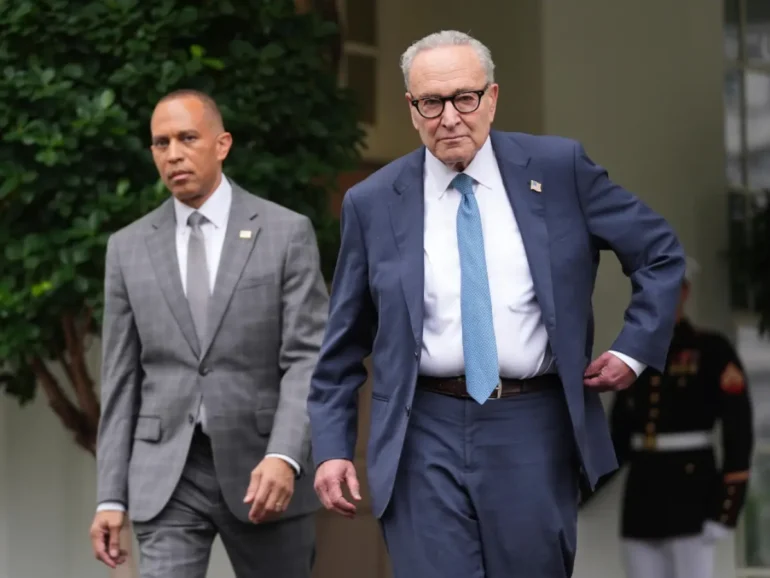WASHINGTON — As a partial government shutdown stretches into its fifth day, the Trump administration has issued a stark warning: mass layoffs of federal workers could begin imminently if negotiations with Democrats fail to produce a breakthrough. The impasse, rooted in deep partisan divides over funding and health care reforms, threatens economic fallout and widespread hardship for government employees, with no clear path to resolution in sight.
The shutdown kicked off on October 1, marking the start of fiscal year 2026, when Senate Democrats blocked a short-term funding bill that would have kept federal agencies operational through November 21. At the heart of the dispute are Democrats’ demands for a permanent extension of enhanced premium tax credits under the Affordable Care Act (ACA), which help millions of Americans afford private health insurance. They also seek firm assurances that the White House won’t unilaterally slash agreed-upon spending. Republicans, led by President Donald Trump and Senate Majority Leader John Thune, insist the government must reopen first, framing Democratic resistance as obstructionist.
In a series of tense Sunday interviews, White House officials ramped up the pressure. National Economic Council Director Kevin Hassett, speaking on CNN’s State of the Union, described the administration’s dual-track approach: preparation for drastic action alongside lingering optimism for compromise. “President Trump and Russ Vought are lining things up and getting ready to act if they have to, but hoping that they don’t,” Hassett said, referring to Office of Management and Budget (OMB) Director Russell Vought. He warned that if Trump deems talks “absolutely going nowhere,” layoffs will commence—potentially affecting thousands of federal workers and costing the economy up to $15 billion per week in lost GDP, according to the Council of Economic Advisers.
Hassett struck a cautiously hopeful tone, suggesting Democrats might “see reason” when lawmakers return to Washington on Monday. “It’s just common sense to avoid layoffs like that,” he added, highlighting the ripple effects on employees’ rent payments and daily finances. Yet, his words carried an undercurrent of resolve, echoing Trump’s long-standing push to shrink the federal bureaucracy.
President Trump himself amplified the threat later that day. When pressed by reporters on the timeline for layoffs, he replied cryptically: “It’s taking place right now.” The OMB, a key player in Trump’s efficiency drive, did not respond to requests for further details. On Thursday, Trump huddled with Vought to explore “unprecedented opportunities” for agency-wide cuts and firings amid the shutdown, according to White House Press Secretary Karoline Leavitt. “It’s likely going to be in the thousands,” she noted, underscoring the scale of the potential purge.
From the Democratic side, frustration boiled over. Senate Democratic Leader Chuck Schumer, on CBS’s Face the Nation, accused Republicans of stonewalling. “They’ve refused to talk with us,” Schumer said, calling for direct negotiations between Trump and the four congressional leaders to break the deadlock. House Democratic Leader Hakeem Jeffries went further on NBC’s Meet the Press, blasting the administration’s tactics as irresponsible: “What we’ve seen is negotiation through deep fake videos, the House canceling votes and, of course, President Trump spending yesterday on the golf course.”
Trump, for his part, has shown some openness to health care discussions but only on Republican terms. “We want to fix [Obamacare] so it works,” he said, reiterating his view that the ACA has been a “disaster” for Americans. Thune echoed this on Fox News’s Sunday Morning Futures, issuing an ultimatum: “It’s open up the government or else. That’s really the choice that’s in front of them right now.”
Informal bipartisan huddles among rank-and-file senators have yielded little progress. Arizona Democrat Ruben Gallego admitted to CNN, “At this point, no” when asked if a deal felt closer. With the Senate’s 53-47 Republican majority, GOP leaders need at least eight Democratic votes to pass the stopgap bill—already approved by the House—but only three have signaled support so far. A fifth Senate vote on the measure, plus a Democratic alternative, is slated for Monday, though neither is expected to clear the 60-vote filibuster threshold.
The human toll is already mounting. Federal landmarks like the Washington Monument stand shuttered, and unpaid workers brace for uncertainty. Economists warn of broader damage: disrupted services, delayed payments, and a hit to consumer confidence. As the shutdown drags on, the question looms: Will Democratic demands force a Republican retreat, or will Trump’s layoffs gamble reshape the federal workforce forever?
For now, all eyes turn to Capitol Hill, where fresh talks could avert catastrophe—or seal the fate of thousands.
